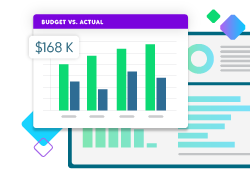10 Tips for Better Grant Management Processes

While grant funding may not require the continual stewardship efforts and nurturing of traditional donor-led funding, it often presents its own challenges: extensive reporting mandates, a list of requirements to qualify for funding, and the possibility of mission creep to meet those requirements.
Whether you are thinking about applying for your first grant or your organization manages several grants each year, it’s important to have clear processes to meet those mandates and avoid straying outside your mission. We talked with leaders from five organizations that manage grant funding and here are their best practices for establishing strong grant management processes.
1. Focus on the why.
Clearly communicate to staff the objectives of the grant and why you applied for it. Will this help you launch a program or expand your reach? Make information readily available to internal stakeholders so it’s easier for people to do their jobs.
Tammy Knapp, CFO of National Math and Science Initiative, says, “I want people to understand the rationale, because then they can join us on this journey where we’re trying to improve what we’re doing.”
2. Learn the requirements.
The OMB’s Uniform Guidance (i.e., 2 CFR 200 Part 200) for government grants is extensive and can be intimidating. In addition, grantors often have their own nuanced set of conditions as well. Review requirements before applying for or accepting awards to ensure that you understand what is necessary to effectively manage the grant and if the grant lifecycle is a good fit for your organization.
“Money comes with strings attached, so be sure you are willing and able to honor each [grant] without putting the rest of your business at risk,” advises Steven Canum, CFO of Senior Resources of West Michigan.
3. Learn the language and history.
In managing grant funding, communication is key. However, grantees sometimes run into difficulty deciphering the terminology between different funding sources. This can make it challenging to understand and effectively meet grant requirements. Seek clarity. It’s okay to admit that you don’t know everything about grants. Talk to your funder,
peers, and internal experts to ensure that you understand the language of grants and other funding sources.
4. Develop top-notch policies and procedures.
Develop a set of best practice policies and procedures to meet the needs of even the most challenging funders—like federal agencies. Resist the urge to only meet the minimum requirements of multiple funders. Support these policies with management tools that help you stay on track with requirements and deadlines throughout the entire grant lifecycle.
Andrea Elliott, CEO of Financial Administrative Support Services, said, “Realize how important it is to have good internal controls, good accounting policies and procedures, and good people doing the work.”
5. Communicate outcomes.
Grantors increasingly view themselves as investors and, as a result, place greater emphasis on outcomes reporting. In addition to the financial reporting requirements that grant recipients must meet, funders also expect statistical data that can demonstrate outcomes and effectiveness of program delivery, such as the number of meals served, people reached, or employees trained. Having this data available and integrated into the reporting system allows grantees to not only meet these reporting requirements efficiently, but also to appropriately measure costs based on statistical units, such as square footage.
6. Adopt a robust fund accounting system.
Get a clear understanding of what capabilities you need in your accounting software to effectively manage grant funds. Government funders typically have a list of minimum requirements that a grantee’s accounting system must be able to support—such as the ability to manage multiple revenue streams, budget and report by grant and program, and apply indirect cost rates. Make sure your accounting system can accurately track grant revenue and expenses and has controls to prohibit out-of-budget spending.
7. Foster strong internal partnerships.
Finance must partner with other departments and organizational leadership. Colleen Calandra, CFO of Sacramento Children’s Home, advises, “For those of you in finance, hopefully you’re already working with your CEO, executive director, and their networks…the more people you can meet in the business that you operate in, the more ideas that can be shared.”
8. Highlight your community.
When you are putting together your grant applications and reporting, you want to emphasize achieving the desired outcomes. Your requests—and proof points—should evoke emotion and appeal to the funder’s goals and values. Use stories, graphics, and anecdotes to highlight the humanity of your organization’s campaign and the concrete difference you’re making.
9. Lead the change.
People often want to stay with what’s familiar, no matter how inefficient and tedious. A crucial part of a leader’s daily role is to guide the path toward positive change: more efficiency, better information, and more accessible data.
Build excitement with staff around the possibilities of more integration, more reporting, and getting information more quickly. Incorporate a formal change management protocol to prompt process implementation and effectively manage the resulting changes.
10. Keep the momentum going.
With many initiatives in a rapidly changing environment, it can be challenging to keep staff engaged throughout the process. Timely communication, staff education, and effective training are important to keep momentum.
“If we can become more efficient, we can have better information and better data to manage things,” Nelson Nava, CFO of HumanKind, says. “And if we can maximize our output and minimize our expenses, we will be able to serve more individuals.”
Build Confidence with the Right Tools
An effective grant management process includes people from across your organization, including leadership, program, and finance. With the right software and internal controls, you can break down silos to get accurate reporting to your funding organization and keep everyone engaged throughout the process.
If you are looking for more ways to improve your grant management collaboration, check out our webinar, Building a Strong Grants Compliance Team: The Importance of Finance and Program Staff Collaboration.
Fund Accounting Software that Drives Impact
Find out how Blackbaud’s Financial Edge NXT® fits your organization.




